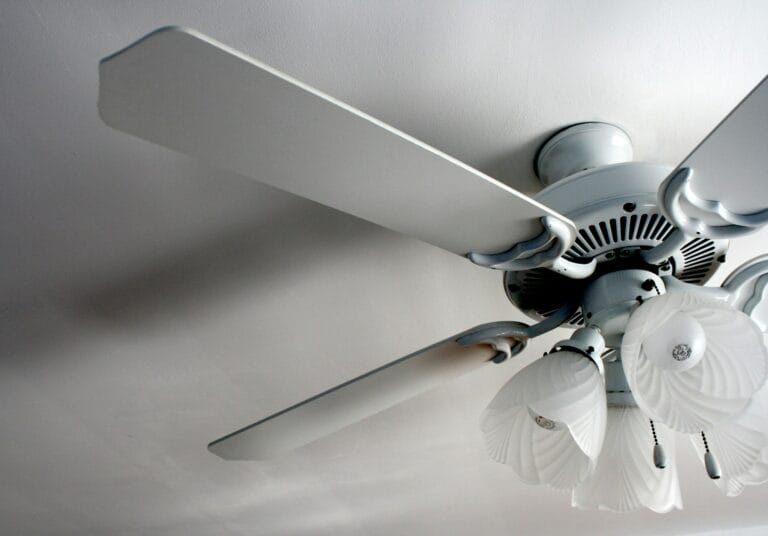Ever looked inside a light switch or GFCI outlet and seen wires labeled line and load?
And then wondered… what do these even mean?
Let’s be honest, electrical terms can sound like a foreign language.
But here’s the thing: understanding line vs load isn’t just for electricians.
If you’re a homeowner doing DIY projects, it’s something you should absolutely get familiar with.
What Does “Line vs Load” Mean?
At the core, line vs load is about direction, kind of like upstream vs downstream.
- Line wires bring power into the device.
- Load wires send power out of the device to other outlets, switches, or appliances.
Think of it like a water faucet:
- The line is the water coming from the pipe.
- The load is the water heading to your garden hose or sprayer.
Knowing the difference is crucial, especially when you’re installing or replacing things like GFCI outlets, light switches, or even thermostats.
Why Homeowners Should Care About Line vs Load
Here’s where it matters:
- Safety: If you mix up line vs load wires, you could leave downstream devices unprotected, or worse, shock yourself.
- Functionality: Some devices like GFCIs won’t work at all if they’re wired incorrectly.
- Code Compliance: Electrical codes require devices to be connected properly for them to pass inspection.
So yeah, it’s kind of a big deal.
How to Identify Line vs Load Wires
This part’s important, especially if you’re replacing an outlet or switch and you didn’t label things before removing the old one.
Here’s how to figure it out:
1. Use a Voltage Tester
- Turn off power at the breaker.
- Disconnect all wires from the device.
- Turn the breaker back on (carefully).
- Use a non-contact voltage tester or multimeter to test the wires.
The wires that still have power are your line wires.
The ones that show no power? Yep, those are the load wires.
2. Check the Labeling
Many GFCI outlets have clear markings:
- LINE is usually at the top or back of the device.
- LOAD is typically at the bottom.
If you’re working with a brand-new switch or outlet, read the manual.
Manufacturers almost always label line vs load somewhere in the instructions.
Real-Life Example: Swapping a GFCI Outlet
Let’s say you’re replacing a GFCI in your bathroom.
- You test the wires.
- Two of them have power: those go to the line terminals.
- Two others don’t: those are the load wires feeding your other bathroom outlet.
If you mix them up?
- The new GFCI might power up.
- But the downstream outlet won’t be GFCI-protected anymore.
And that defeats the whole point.
Pro Tips When Working with Line vs Load
Here’s how to make sure you don’t mess it up:
- Always label wires before disconnecting them.
- Use electrical tape or stickers to tag line and load clearly.
- Don’t guess. If you’re unsure, test again or call an electrician.
- If you’re installing a GFCI, and you don’t need to protect other outlets, just connect the line, and cap off the load.
Common Mistakes Homeowners Make
Let’s avoid these:
- Assuming position equals function
Just because a wire is on top doesn’t mean it’s a line. - Skipping testing
Never guess which wire is which. A $15 tester can save you from a $500 mistake (or worse). - Wiring load wires to line terminals
This can stop a GFCI from protecting anything past it, and you won’t even know until there’s a problem.
So double-check your work. Every time.
Still Confused? Here’s a Quick Table to Help
| Feature | Line Wire | Load Wire |
|---|---|---|
| Brings power in? | ✅ Yes | ❌ No |
| Sends power out? | ❌ No | ✅ Yes |
| Always hot? | ✅ Typically yes | ❌ Only when device is powered on |
| Marked on device? | ✅ Usually labeled as LINE | ✅ Usually labeled as LOAD |
Keep this in mind every time you’re dealing with line vs load wiring.
Bottom Line: Keep It Safe, Keep It Smart
Here’s what I want you to take away:
- Line vs load isn’t complicated once you know what to look for.
- Don’t skip testing, it’s your best friend.
- Always follow the instructions on the device.
- And if something feels off, there’s no shame in calling a pro.
Messing up line vs load might not blow up your house…
but it can create a hidden safety risk. So let’s do it right.
Want more home electrical tips?
Whether you’re planning a renovation or just changing a light switch, I’ve got more easy-to-follow guides coming your way.
Bookmark this page, and if you need a licensed electrician, don’t hesitate to reach out.
You got this. Stay safe.



